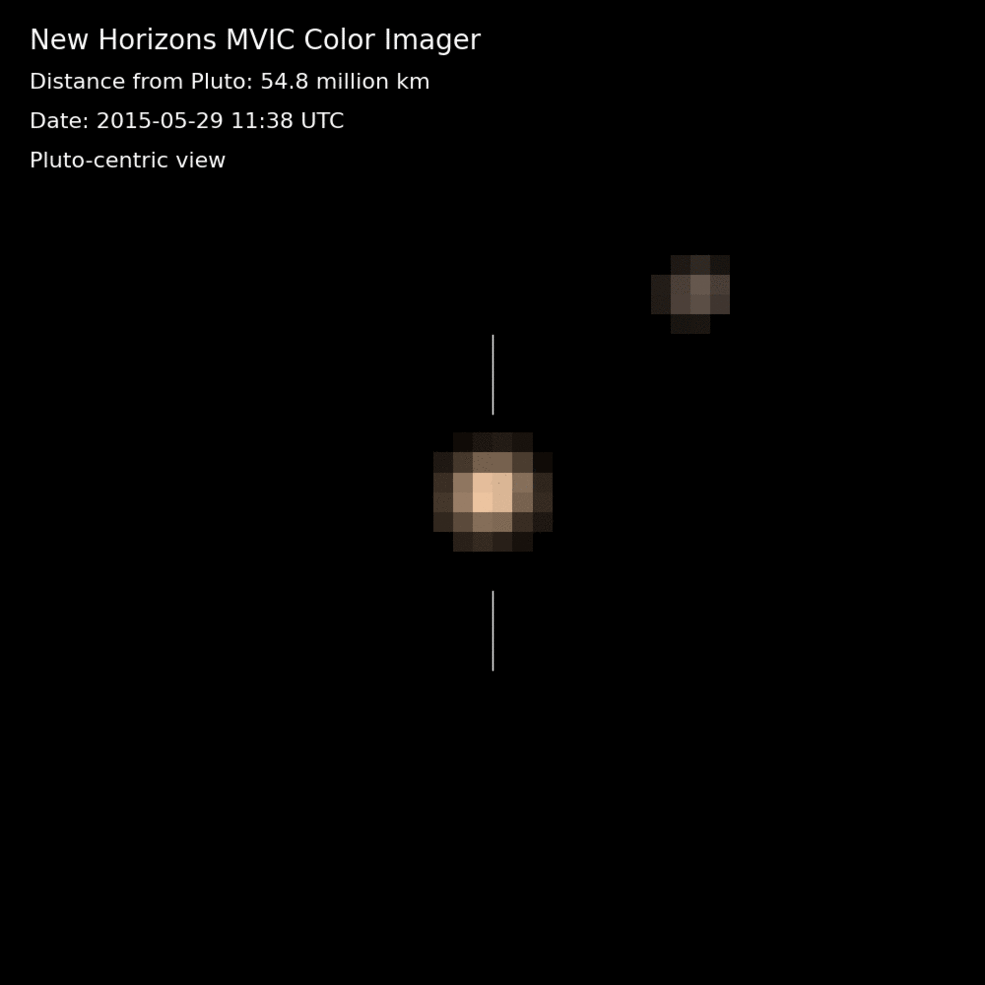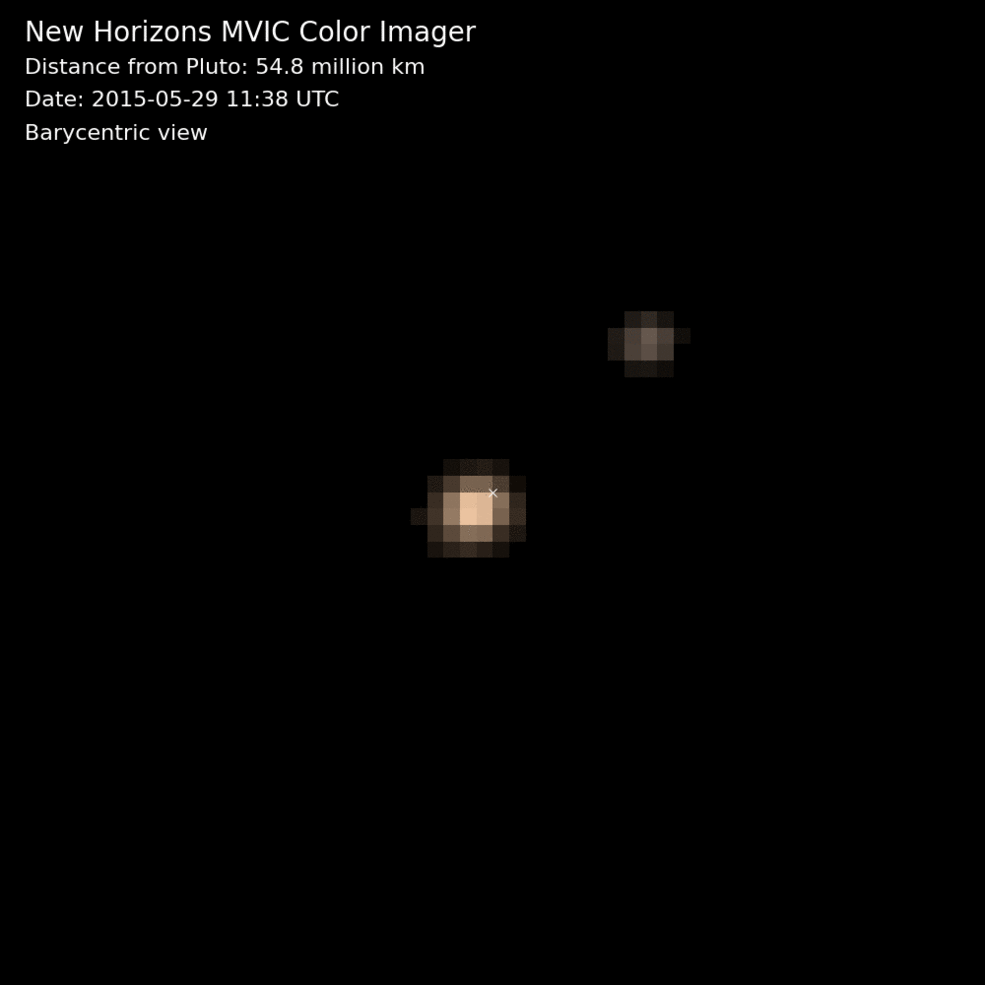On 14 July 2015, NASA's New Horizons spacecraft will make an historic zoom past Pluto, and get us as close as we've ever gotten to the frosty non-planet - within 12,000 km of it and through the orbits of its five tiny moons.
After a journey spanning nine years and almost 5 billion kilometres, the New Horizons spacecraft drew closer than ever to Pluto last week, with just four weeks and 32 million km to go before it hits its end-goal. This week, NASA released moving images of Pluto and its moon Charon that were captured back in April. These are the first images of Pluto we've ever seen in near-true colour, and just because they doesn't really look like much doesn't mean this moment isn't pretty damn special.
The images were taken by a Multicolour Visible Imaging Camera on an instrument called Ralph aboad the New Horizons spacecraft. They were captured over the course of a few days between May 29 and June 3 when New Horizons was about 50 million kilometres (30 million miles) away from the lonely former planet.
The colour is true in the sense that those are the unaltered shades of beige and grey that were picked up by the spacecraft's imaging equipment, but because the images are just made up of a few pixels, they could represent a slightly distorted version of the planet's actual surface colour. We will just have to wait and see what the more detailed pictures will reveal.
 Credit: NASA
Credit: NASA
"It's exciting to see Pluto and Charon in motion and in colour," Alan Stern, the New Horizons Principal Investigator at NASA, said in a statement. "Even at this low resolution, we can see that Pluto and Charon have different colours - Pluto is beige-orange, while Charon is grey. Exactly why they are so different is the subject of debate."
As Rachel Feltman reports for The Washington Post, a recent study using data collected from the Hubble spacecraft revealed that many of Pluto's moons has a similar level of reflectivity to Charon, "which suggests they might have been formed from the same material, or even by the same event - but that at least one of the moons, Kerberos, is very dark in comparison," she says. Only when we get closer to get a better view of everything will be have the opportunity to make a more educated guess.
The image above reveals the rotation of Charon around Pluto, with Pluto in the centre. The image below shows the orbit of Pluto and Charon according to the 'x' marker, which is their common centre of gravity.
If New Horizons makes it safely to its end-point of 12,000 km away from Pluto, "we'll have images of Pluto that rival those we have of Earth in terms of clarity and resolution," says Feltman. Which means it's time for all us space nuts to start very slowly thawing our turkeys, because we're about to get Christmas in July.
 Credit: NASA
Credit: NASA
